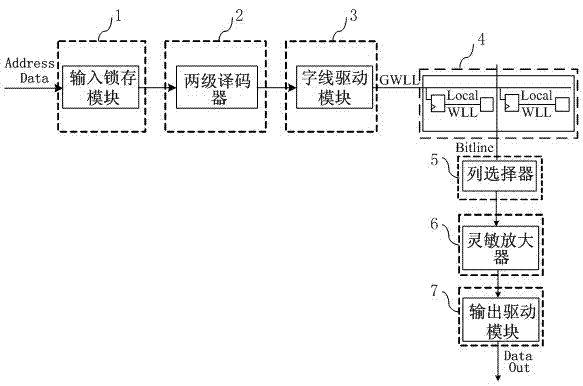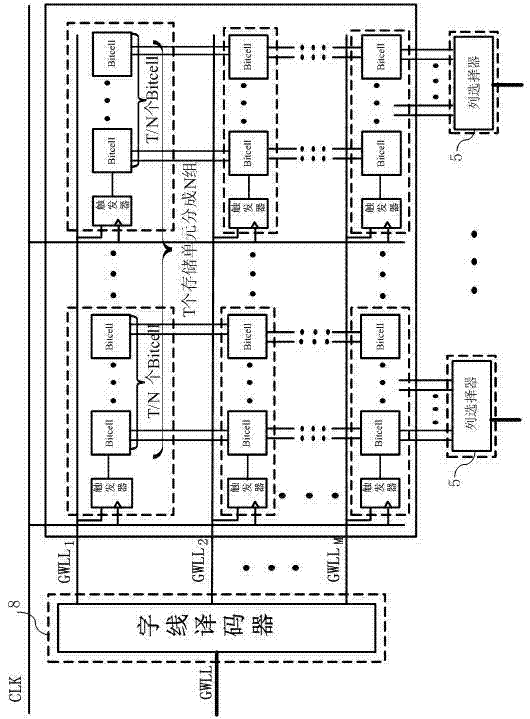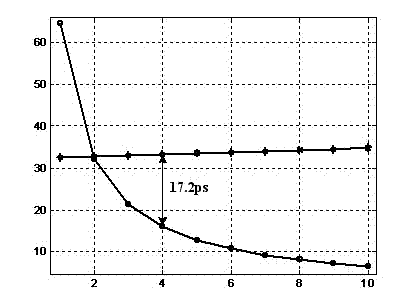Method and framework for optimum grading of the inside of high performance static state random access memory
A static random and memory technology, applied in the direction of static memory, digital memory information, information storage, etc., can solve the problem of no increase in throughput, achieve the effects of reduced delay, reduced driving capability requirements, and optimal performance
- Summary
- Abstract
- Description
- Claims
- Application Information
AI Technical Summary
Problems solved by technology
Method used
Image
Examples
Embodiment Construction
[0011] A method for internal optimal grading of a high-performance SRAM, the method comprising: inserting a flip-flop between the global word line GWLL and the local word line Local WLL, dividing each row of the memory array 4 into N equal to the number of memory cells Bitcell memory modules, so that each memory module contains approximately equal parasitic capacitance, so the problem of the second-level delay short board can be avoided. With this implementation, each flip-flop only needs to drive a small number of storage units Bitcell, which can greatly reduce the size and clock load of the flip-flop. If the total number of the storage unit Bitcell of each row of the storage array 4 is T, the storage unit Bitcell of each row of the storage array 4 is divided into N storage modules, then the number of the storage unit Bitcell included in each storage module is T / N, one flip-flop corresponds to T / N storage units Bitcell in the storage module. Such as figure 1 , 2 shown.
...
PUM
 Login to View More
Login to View More Abstract
Description
Claims
Application Information
 Login to View More
Login to View More - R&D
- Intellectual Property
- Life Sciences
- Materials
- Tech Scout
- Unparalleled Data Quality
- Higher Quality Content
- 60% Fewer Hallucinations
Browse by: Latest US Patents, China's latest patents, Technical Efficacy Thesaurus, Application Domain, Technology Topic, Popular Technical Reports.
© 2025 PatSnap. All rights reserved.Legal|Privacy policy|Modern Slavery Act Transparency Statement|Sitemap|About US| Contact US: help@patsnap.com



